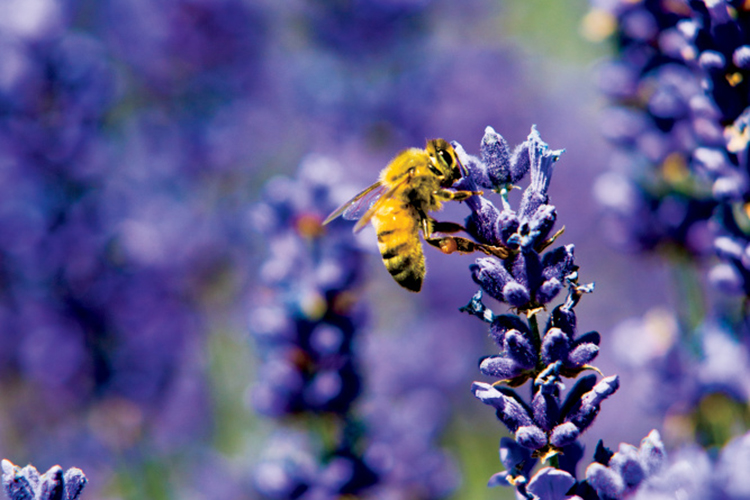Home > Farm > Environment > Flowering Plants Create Buzz in Pollinator Heath
Flowering Plants Create Buzz in Pollinator Heath
 By filling gardens with bee-friendly flowering plants, home gardeners are becoming vital partners in propping up the world’s declining bee population. A third of all our food depends on pollination by bees and other pollinating insects.
By filling gardens with bee-friendly flowering plants, home gardeners are becoming vital partners in propping up the world’s declining bee population. A third of all our food depends on pollination by bees and other pollinating insects.
“Especially because we have more people living in urban areas than ever before, I do believe home gardeners can have a significant impact on the bee population,” says Gail Langellotto, statewide coordinator for the Oregon State University Extension Service’s Master Gardener program.
Attention to supporting pollinator health with flowering plants has increased in recent years starting at the wholesale level, according to Leigh Geschwill of F&B Farms and Nursery in Woodburn.
“When we introduce new plants, we talk about whether it is pollinator-friendly or not, and we’re seeing retailers promote that attribute,” says Geschwill, who sells primarily to retail nurseries.
“Some of the flowers that pollinators like, such as echinacea and lavender, have always been popular plants. The added benefit is that consumers are now aware that they are good for pollinators, in addition to being beautiful plants to have in their yard,” Geschwill says.
One key gardening strategy is to plant a wide variety of flowering plants, known as the “shotgun approach,” says OSU Bee Biologist Andony Melathopoulos. Because plants bloom at different times, plant diversity ensures pollen over a long blooming season, he says, and it provides a wide array of food sources for different pollinators.
Some bees have long tongues, some have short tongues,” Melathopoulos says, “so if you don’t know all the specifics, you can do well by just planting a diversity of things that bloom at different times of the year.”
That said, Melathopoulos points out that not all plants are created equal when it comes to attracting pollinators.
“People often think the showy flower ought to be good for pollinators,” he says. “But a lot of roses or peonies that really look good have absolutely no value for pollinators.”
A rule of thumb when choosing plants for your garden, he says, is to tend toward native flowering plants, especially ones promoted as pollinator friendly.
“Another approach is just to keep your eye out around your property,” he says. “Pay attention to what pollinators are visiting.”
 In addition to horticultural plants, Sarah Kincaid, an entomologist with the Oregon Department of Agriculture, says some crop plants are excellent for attracting bees. “A lot of pollinators are generalists,” she says, “so they like to forage on a lot of different types of plants. Farmer’s crops, such as strawberries, caneberries, blueberries, clover and orchard crops, can be wonderful pollinator plants.”
In addition to horticultural plants, Sarah Kincaid, an entomologist with the Oregon Department of Agriculture, says some crop plants are excellent for attracting bees. “A lot of pollinators are generalists,” she says, “so they like to forage on a lot of different types of plants. Farmer’s crops, such as strawberries, caneberries, blueberries, clover and orchard crops, can be wonderful pollinator plants.”
Kincaid adds that leaving nesting habitat in landscapes can benefit bee populations. “Oregon bees nest in a variety of places, such as small cavities in trees, beetle holes in old wood, the pithy stems of plants and in underground tunnels,” Kincaid says.
Another step homeowners can take to preserve bee populations is to avoid applying pesticides when plants are in bloom, Melathopoulos says.
“Applying insecticides not according to the label can be very harmful to pollinators and now we’re starting to learn that some fungicides also have effect on some pollinators. You can find windows of opportunity to deal with most pest problems before the plant is in bloom,” he adds.
See More: Find a recipe for Honey-Bacon Goat Cheese Dip
By practicing integrated pest management and planting a variety of flowering plants, homeowners can provide a much-needed refuge for pollinators, Langellotto says.
“Gardens, especially home gardens, could really be like an oasis in an otherwise inhospitable landscape for a variety of pollinators,” she says.



